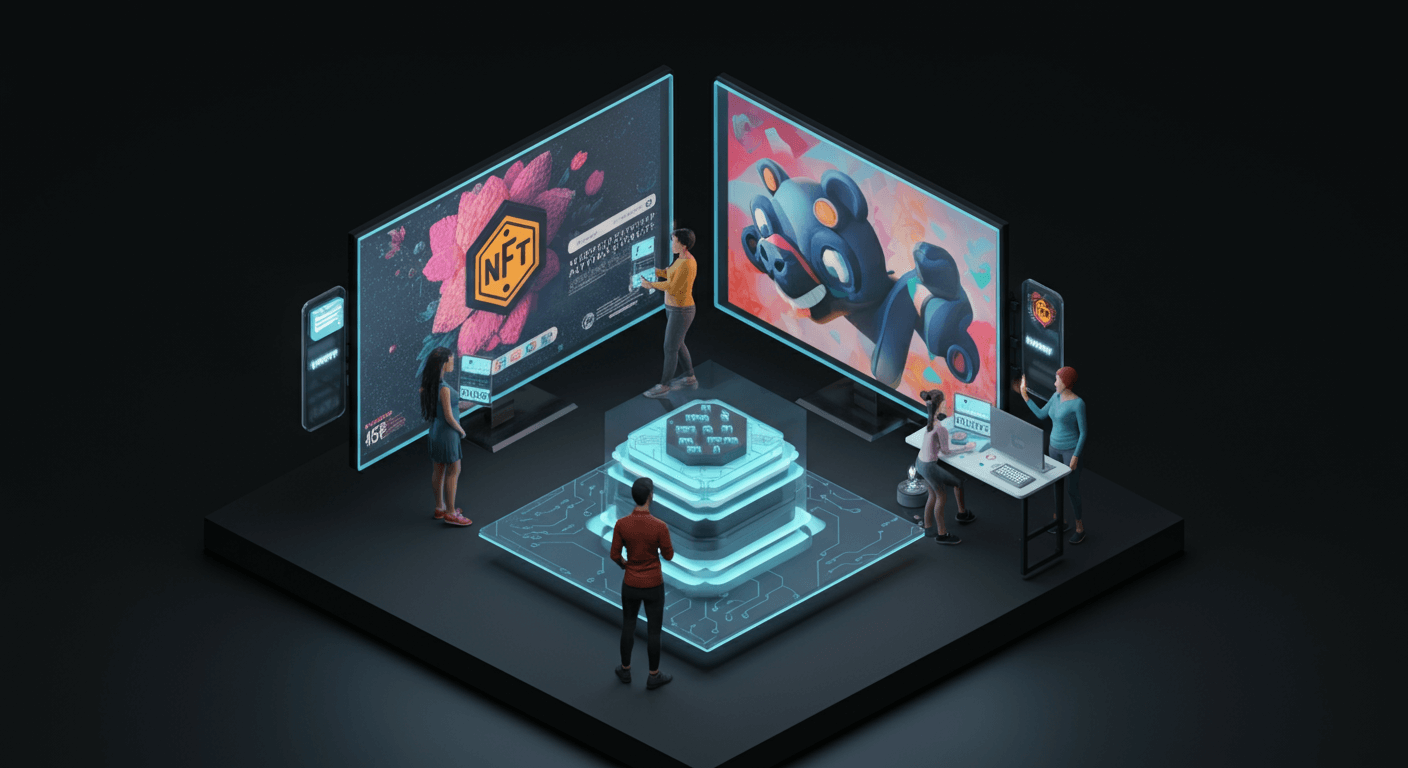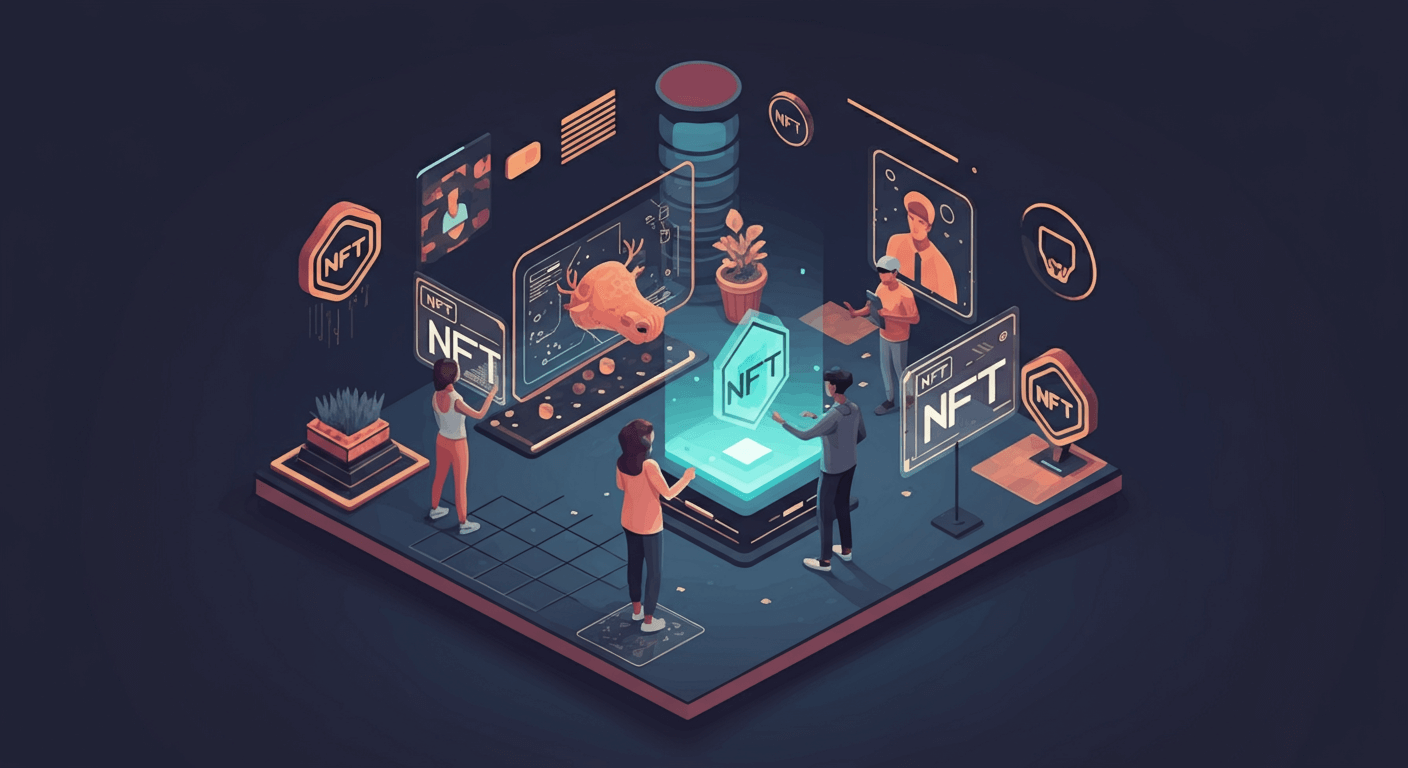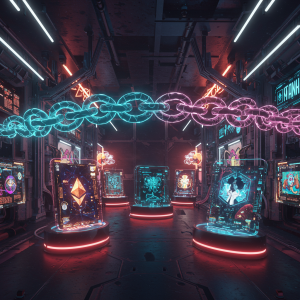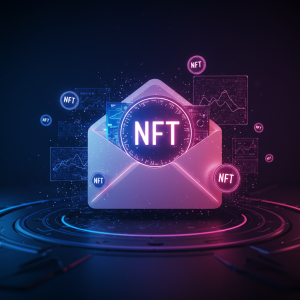What Is NFT Art? A Beginner’s Guide to Digital Collectibles

NFT art has transformed the art world, creating headlines with million-dollar sales and sparking heated debates about digital ownership. But what exactly is NFT art, and why has it captured the attention of artists, collectors, and investors worldwide?
Non-Fungible Token (NFT) art represents a revolutionary way to buy, sell, and own digital artwork using blockchain technology. Unlike traditional art that exists physically, NFT art lives entirely in the digital realm while providing verifiable proof of ownership and authenticity.
Understanding NFTs and Digital Art

What Makes an NFT “Non-Fungible”?
The term “non-fungible” means something cannot be replaced or exchanged on a one-to-one basis. Unlike cryptocurrencies such as Bitcoin, where one coin equals another, each NFT is unique and irreplaceable.
Think of it like this: a dollar bill is fungible because you can exchange it for any other dollar bill of equal value. A famous painting, however, is non-fungible because no other artwork can replace its exact value or significance.
How NFT Art Works
NFT art combines traditional digital art with blockchain technology. Artists create digital artwork—whether it’s a painting, photograph, animation, or interactive piece—then “mint” it as an NFT on a blockchain platform.
The minting process creates a unique digital certificate that proves ownership and authenticity. This certificate lives on the blockchain, making it nearly impossible to forge or duplicate.
The Technology Behind NFT Art
Blockchain Platforms
Most NFT art exists on the Ethereum blockchain, though other platforms like Solana, Polygon, and Tezos have gained popularity. These blockchains serve as public ledgers that record every transaction and ownership change.
When you purchase NFT art, the blockchain records your ownership. This creates a transparent history showing who created the piece, who has owned it, and when ownership changed hands.
Smart Contracts
Smart contracts power NFT transactions. These self-executing contracts automatically handle the transfer of ownership when certain conditions are met, such as payment completion.
Artists can program smart contracts to pay them royalties every time their NFT art sells to a new owner. This creates ongoing revenue streams that traditional art sales cannot provide.
Types of NFT Art
Static Digital Art
The most common type includes digital paintings, illustrations, and photographs. Artists create these pieces using traditional digital art tools, then mint them as NFTs.
Animated and Interactive Art
Some NFT art incorporates movement, sound, or user interaction. These pieces can change over time or respond to external data like weather patterns or stock prices.
Generative Art
Computer algorithms create generative NFT art using predetermined rules and random variables. Famous collections like CryptoPunks and Bored Ape Yacht Club use this approach to create thousands of unique variations.
Profile Picture (PFP) Collections
These collections feature thousands of unique characters or avatars that owners use as social media profile pictures. They often serve as membership tokens for exclusive communities.
Why People Buy NFT Art
Digital Ownership and Authenticity
NFT art provides verifiable proof of ownership for digital files. While anyone can save a copy of the image, only one person owns the original NFT and its associated rights.
Supporting Artists
Many collectors purchase NFT art to support digital artists directly. The blockchain technology allows artists to receive fair compensation without intermediaries taking large commissions.
Investment Potential
Some buyers view NFT art as an investment opportunity. Certain pieces have appreciated significantly in value, though the market remains highly volatile and speculative.
Community Access
Many NFT collections provide access to exclusive communities, events, or additional benefits. Owners might receive special privileges, future airdrops, or membership in elite groups.
How to Buy NFT Art
Setting Up a Digital Wallet
First, you’ll need a cryptocurrency wallet that supports NFTs. Popular options include MetaMask, Coinbase Wallet, and Trust Wallet. These wallets store your cryptocurrency and NFTs securely.
Purchasing Cryptocurrency
Most NFT marketplaces require payment in cryptocurrency, typically Ethereum (ETH). You can buy cryptocurrency through exchanges like Coinbase, Binance, or directly through some wallet applications.
Choosing a Marketplace
Several platforms facilitate NFT art sales:
OpenSea serves as the largest general NFT marketplace, featuring art from thousands of creators across various price ranges.
SuperRare focuses on high-quality digital art from curated artists, positioning itself as a premium platform for serious collectors.
Foundation operates on an invite-only model for artists, creating an exclusive environment for discovering emerging talent.
Nifty Gateway partners with established artists and brands to release limited-edition collections, often featuring famous creators.
Creating and Selling NFT Art
For Artists Getting Started
Artists can create NFT art using any digital creation tool, from Adobe Photoshop to specialized 3D software. The key is producing original, high-quality work that resonates with potential collectors.
The Minting Process
Minting involves uploading your artwork to an NFT platform and paying a fee to create the blockchain record. Some platforms allow “lazy minting,” where the NFT is created only when someone purchases it, reducing upfront costs.
Pricing Your Work
New artists often start with lower prices to build a collector base and reputation. Factors affecting price include artistic quality, uniqueness, artist reputation, and current market demand.
Common Misconceptions About NFT Art
“I Can Just Screenshot It”
While anyone can save a copy of NFT art, they don’t own the original or its associated rights. It’s similar to buying a poster of the Mona Lisa versus owning the actual painting.
“It’s Just a Fad”
Though NFT markets have cooled from their 2021 peaks, the technology continues evolving. Many artists and platforms are building sustainable ecosystems focused on artistic merit rather than speculation.
“It’s Bad for the Environment”
Early NFT platforms used energy-intensive blockchain systems. However, many platforms now use more efficient technologies or carbon-neutral alternatives, significantly reducing environmental impact.
The Future of NFT Art

Emerging Technologies
Virtual and augmented reality are creating new possibilities for immersive NFT art experiences. Artists can create pieces that exist in virtual galleries or overlay onto the real world through AR applications.
Integration with Physical Art
Some artists combine physical artwork with NFT certificates, creating hybrid pieces that bridge digital and traditional art worlds.
Utility and Functionality
Future NFT art might include additional functionality beyond visual appeal, such as access to exclusive content, voting rights in community decisions, or integration with virtual worlds and games.
Getting Started With NFT Art
Whether you’re interested in collecting or creating NFT art, start by exploring existing collections and understanding what appeals to you. Join NFT communities on social media platforms to learn from experienced collectors and artists.
For collectors, begin with smaller purchases to understand the process and market dynamics. For artists, focus on creating authentic work that reflects your unique style and vision rather than chasing trends.
NFT art represents a significant shift in how we think about digital ownership and artistic value. While the market continues maturing, the technology provides new opportunities for artists to monetize their work and for collectors to own verifiable digital assets.
The key to success in the NFT art space lies in understanding both the technology and the artistic merit behind each piece, making informed decisions based on personal interest rather than pure speculation.





